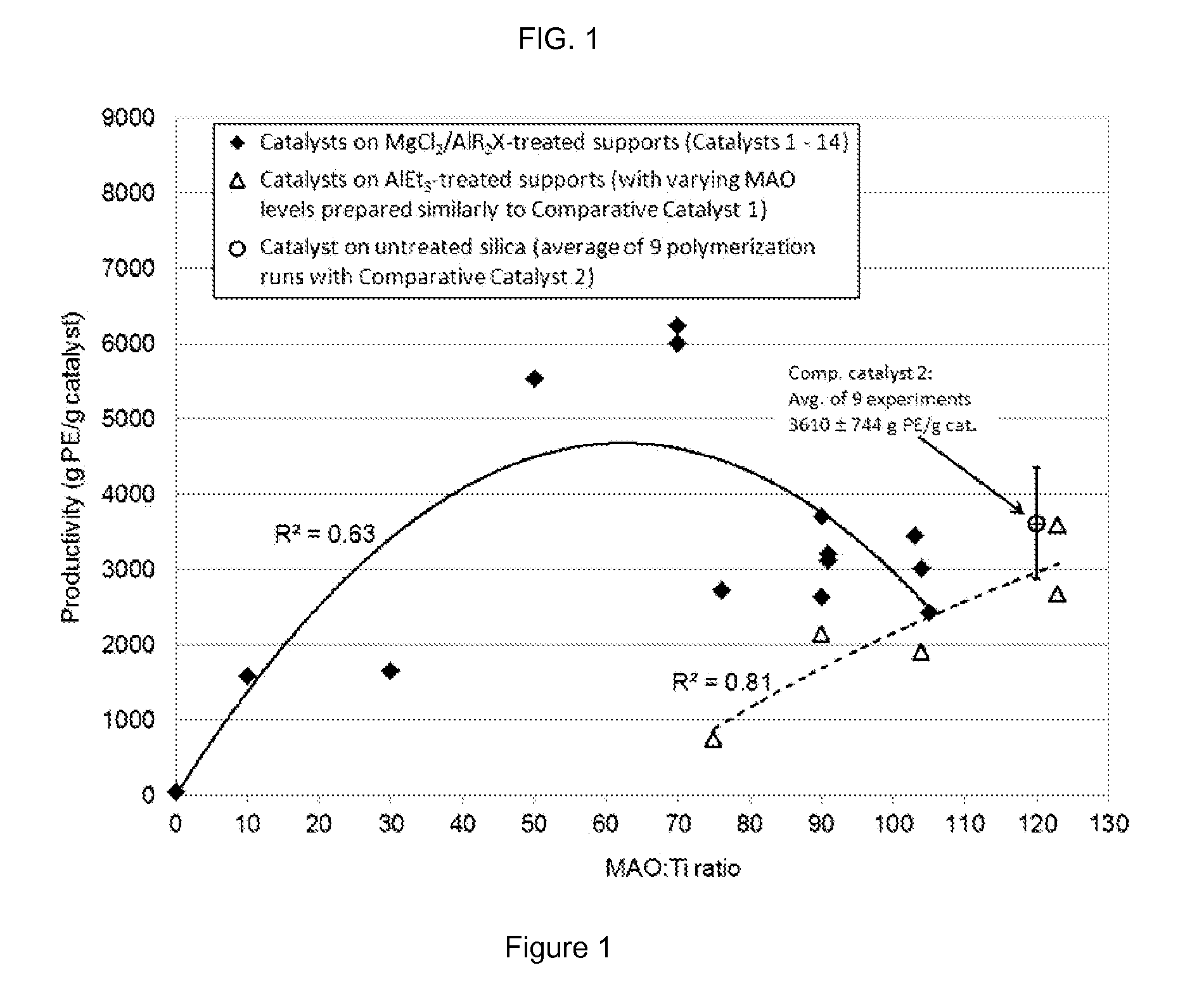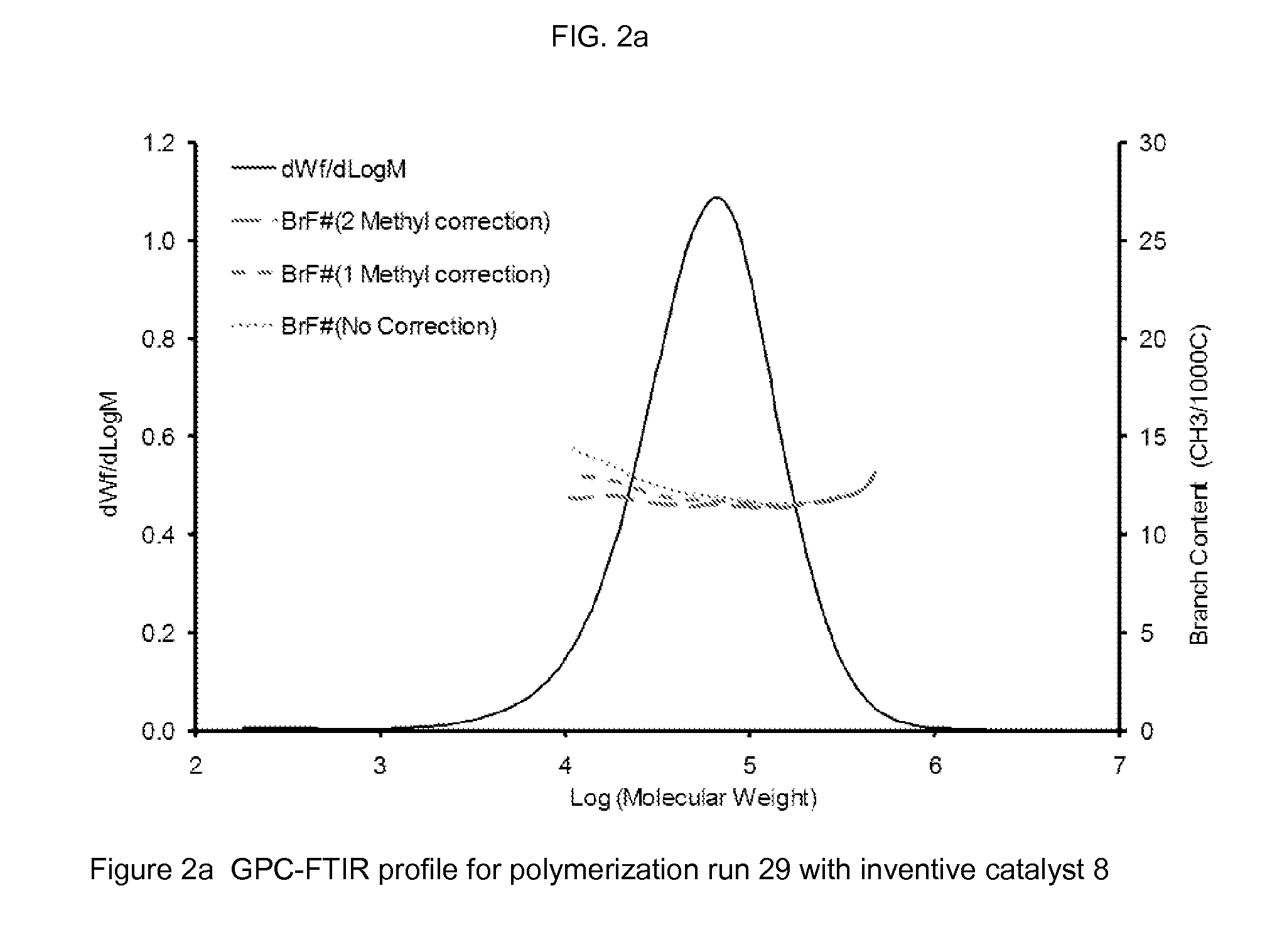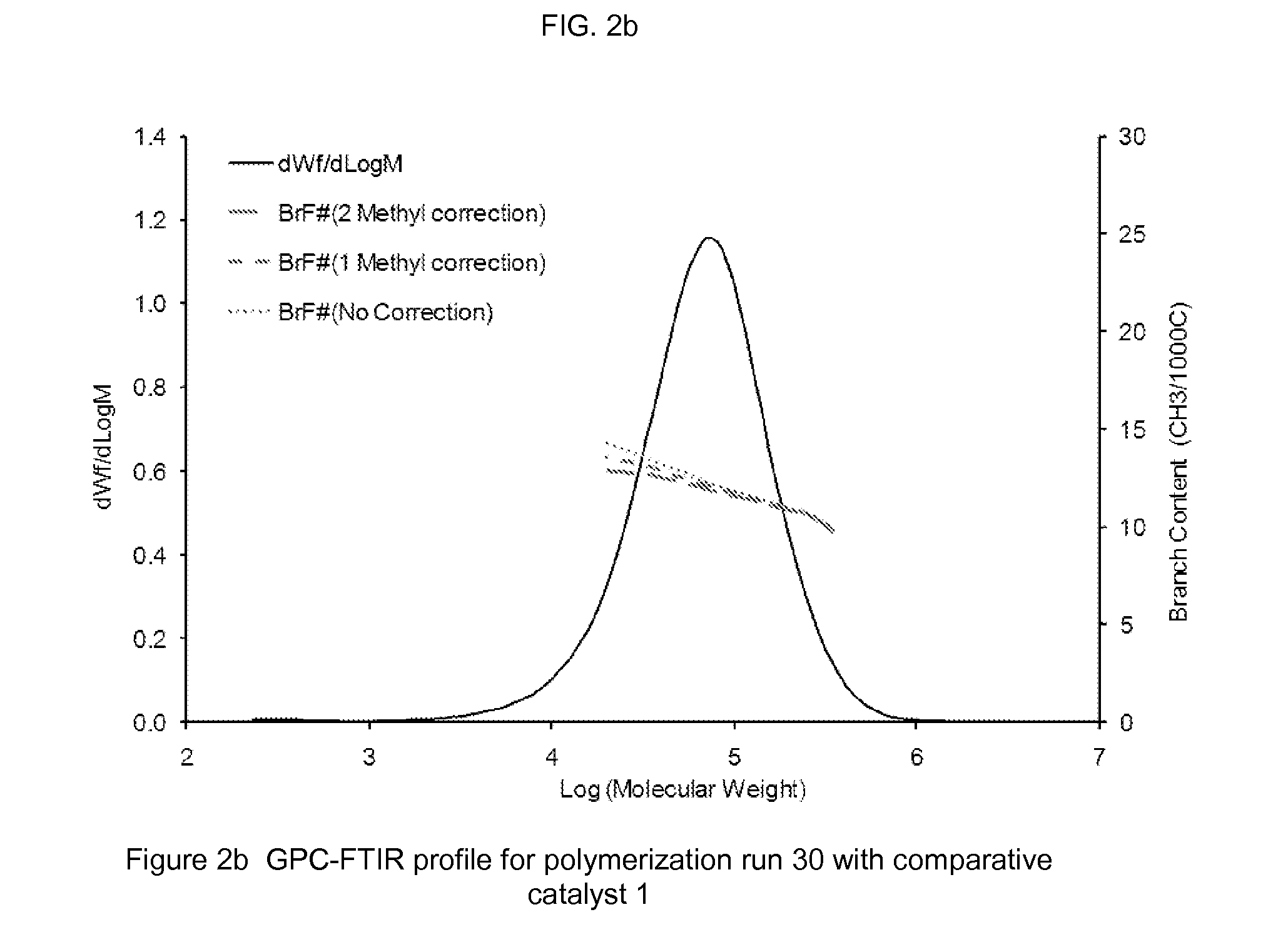Passivated supports for use with olefin polymerization catalysts
- Summary
- Abstract
- Description
- Claims
- Application Information
AI Technical Summary
Benefits of technology
Problems solved by technology
Method used
Image
Examples
examples
[0146]Mn, Mw, and Mz (g / mol) were determined by high temperature Gel Permeation Chromatography with differential refractive index detection using universal calibration (e.g. ASTM-D6474-99). The molecular weight distribution (MWD) is the weight average molecular weight divided by the number average molecular weight, Mw / Mn.
[0147]High temperature GPC equipped with an online FTIR detector (GPC-FTIR) was used to measure the comonomer content as the function of molecular weight.
[0148]The short chain branch frequency (SCB per 1000 carbon atoms) and hence the comonomer content (in weight percent) of copolymer samples was determined by Fourier Transform Infrared Spectroscopy (FTIR) as per the ASTM D6645-01 method. A Thermo-Nicolet 750 Magna-IR Spectrophotometer equipped with OMNIC version 7.2a software was used for the measurements.
[0149]Melt indexes, I2, I5, and I21 for the polyethylene composition were measured according to ASTM D1238 (when conducted at 190° C., using a 2.16 kg, a 5 kg and...
PUM
| Property | Measurement | Unit |
|---|---|---|
| Percent by mass | aaaaa | aaaaa |
| Substance count | aaaaa | aaaaa |
| Weight | aaaaa | aaaaa |
Abstract
Description
Claims
Application Information
 Login to View More
Login to View More - R&D
- Intellectual Property
- Life Sciences
- Materials
- Tech Scout
- Unparalleled Data Quality
- Higher Quality Content
- 60% Fewer Hallucinations
Browse by: Latest US Patents, China's latest patents, Technical Efficacy Thesaurus, Application Domain, Technology Topic, Popular Technical Reports.
© 2025 PatSnap. All rights reserved.Legal|Privacy policy|Modern Slavery Act Transparency Statement|Sitemap|About US| Contact US: help@patsnap.com



